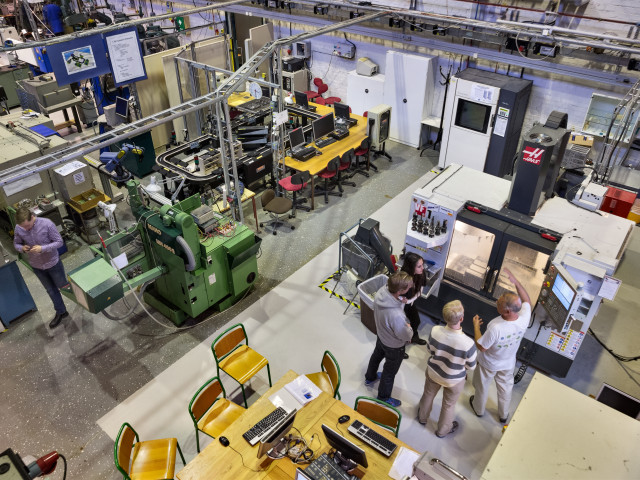• Work environment regulations
• Chemical and microbiological risks
• Risk assessment
• Measurement methods and measurement strategies
• Control measures
• Intervention

The overall aim is to provide knowledge about chemical and microbiological risk management and ability to apply this knowledge on different types of chemical and microbiological risks at the workplace to prevent health effects and accidents.
The course will provide knowledge within the following topics and ability to use the knowledge in problem-solving:
The lectures during the first week are mandatory in order for the students to be assigned to a project group. The project work is mandatory for passing the course.
Choose semester and course offering to see current information and more about the course, such as course syllabus, study period, and application information.
KTH Flemingsberg
Autumn 2026: P2 (7.5 hp)
50%
10224
Normal Daytime
English
Places are not limited
Please note: all information from the Course syllabus is available on this page in an accessible format.
Course syllabus CH2014 (Autumn 2025–)• Work environment regulations
• Chemical and microbiological risks
• Risk assessment
• Measurement methods and measurement strategies
• Control measures
• Intervention
The course will provide knowledge regarding chemical and microbiological working environment factors and the ability to use the knowledge in problem-solving
By the end of the course, the students should be able to:
1. Understand and interpret the Swedish and EU legislation that concern chemical and microbiological risks
2. Pursue and interpret information about health hazards with chemical products and substances and use this information to assess risks when working with chemicals.
3. Perform measurements and risk assessments and subsequently propose appropriate control measures that eliminate or reduce the exposures (in line with the hierarchy of control).
4. Describe, discuss, and critically analyse the advantages and limitations of different measurement strategies and interpret and draw conclusions from measurement results.
5. Describe the requirements regarding chemical and microbiological risks and be able to support organisations’ work with chemical risk management and adapt the methods to the organisation’s needs and prerequisites.
180 ECTS credits in technical, natural or medical sciences or in human resource studies. English B/English 6
Based on recommendation from KTH’s coordinator for disabilities, the examiner will decide how to adapt an examination for students with documented disability.
The examiner may apply another examination format when re-examining individual students.
If the course is discontinued, students may request to be examined during the following two academic years.
If the course is discontinued, students may request to be examined during the following two academic years.
Intended learning outcome number 1 is examined in ÖVN1 and TEN1.
Intended learning outcome number 2 is examined in RED1 and TEN1.
Intended learning outcome number 3 is examined in ÖVN1, RED1 and TEN1.
Intended learning outcome number 4is examined in ÖVN1, RED1 and TEN1.
Intended learning outcome number 5 is examined in ÖVN1, RED1 and TEN1.
Compulsory attendance
Applies to all exercises conducted in the form of seminars (or webinars) and laborations included in ÖVN1. Applies also to the first two course days with lectures, which are designated as a preparation for RED1; where attendance is required to participate in the compulsory project work.